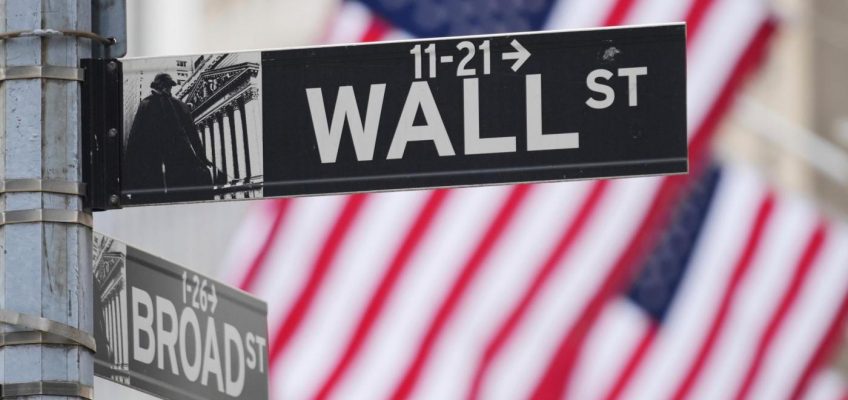By ALEXANDRA OLSON and CLAIRE SAVAGE, Associated Press Business Writers
ARLINGTON, Va. (AP) — The acting chief of the top federal agency for protecting worker rights has signaled a pivot toward prioritizing President Donald Trump’s campaign to stamp out diversity, equity and inclusion programs in the private and public sectors.
The initial steps taken by Andrea Lucas, acting chief of the Equal Opportunity Employment Commission, have earned her strong backing from the Trump administration, which has moved against DEI through embattled executive orders that dismantled programs at federal agencies and threatened investigations and stiff financial penalties for federal contractors that engage in “illegal” diversity-related practices. Trump recently nominated Lucas, who has long been an outspoken critic DEI practices she argues result in discriminatory employment preferences, to a new five-year term as commissioner.
But former Democratic EEOC officials and prominent civil rights groups have accused Lucas of taking shortcuts that supersede her authority and they have urged employers to be wary of her directives and guidance, if not altogether ignore them.
Dow drops 1,200 as US stock market leads a worldwide sell-off following Trump’s tariff shock
In the crosshairs of US tariffs, coral islands in the South Pacific and Arctic outposts
Rubio tries to reassure wary allies of US commitment to NATO as Trump sends mixed signals
Sweeping Trump tariffs draw dismay, calls for talks from countries around the globe
Answering your questions about President Trump’s vast new tariffs
The most recent flashpoint involves two “technical assistance” documents issued by the EEOC along with the Department of Justice attempting to clarify what might constitute “DEI-related Discrimination at Work” and providing guidance on how workers can file complaints over such concerns.
The documents take broad aim at practices such as training, employment resources group and fellowship programs, warning such programs — depending on how they’re constructed — could run afoul of Title VII of the Civil Rights Act, which prohibits employment discrimination based on race and gender.
The documents followed letters that Lucas sent to 20 prominent law firms demanding information about diversity fellowships and other programs she claimed could be evidence of discriminatory practices.
A group of 10 former Democratic commissioners and counsels released its own letter Thursday warning the legal community the DEI documents give the misleading impression that common programs “are fraught with legal peril” and dismissed them as reflecting Lucas’s “personal opinion.” The letter offered counter-guidance on how employers should continue implementing training and other practices that EEOC policy documents encourage to prevent discrimination.
Last month, seven of the same former EEOC officials sent Lucas a letter warning that she appeared to exceed her authority with her demands for information from the 20 law firms without first launching a formal investigation. A group of prominent civil rights organizations went a step further in their own letter to Lucas, urging the law firms to ignore her demands because they have no legal obligation to reply.
“This isn’t how the EEOC works. No single commissioner — not even the Chair — has the authority to send threatening letters demanding private information from employers,” said Noreen Farrell, director of Equal Rights Advocates, one of the civil rights organizations that signed onto the response led by the National Women’s Law Center. “The EEOC Chair can’t just rewrite decades of settled civil rights law with a hastily written memo.”
Jenny Yang, a former EEOC commissioner under former President Barack Obama, said Lucas’ letters to the 20 law firms were without precedent at the EEOC, which initiates most investigations in response to complaints filed by workers. In very rare cases, a commissioner can file their own charge against an employer but it wouldn’t be made public and would require the commissioner to provide evidence of possible discrimination under penalty of perjury, Yang said.
Law firms — including some of the 20 targeted by Lucas — are already coming under pressure to change their approach to diversity and inclusion in response to separate Trump executive orders designed to punish them for taking on the president’s rivals as clients and other actions that have angered him. For example, Skadden, Arps, Slate, Meagher & Flom recently learned that the president intended to issue an order targeting it over its pro bono legal work and its diversity, equity and inclusion initiatives. The firm has consequently agreed to review its hiring practices, among other things.
The 20 law firms targeted in Lucas’ letters did not respond to questions from The Associated Press about whether they intended to respond to her demands. Lucas did not respond to request for comment on the DEI technical assistance documents, and the EEOC declined to say whether the law firms have any legal obligation to respond to her letters or whether they would face any penalty for not doing so.
But Lucas, a Republican who was first appointed to the EEOC in 2020, has long argued that she is not reinterpreting civil rights laws but rather sounding the alarm that many companies have adopted DEI practices that cross the line into discrimination. Lucas has argued the EEOC has turned a blind eye to risky company practices, which she said proliferated especially after the 2020 racial justice protests that followed the police killing of George Floyd.
“Far too many employers defend certain types of race or sex preferences as good, provided they are motivated by business interests in ‘diversity, equity, or inclusion.’,” Lucas said in a statement announcing the new technical assistance on DEI.
Many employers are likely to take heed of her warnings as the EEOC signals that it will be become a powerful ally to workers claiming discrimination stemming from DEI practices.
Anuradha Hebbar, president of CEO Action for Inclusion & Diversity, an arm of the influential Society for Human Resource Management, said the EEOC has especially makes clear that companies should avoid fellowships, internships and other programs that are only open to women or certain racial groups.
Stefan Padfield of conservative think tank National Center for Public Policy Research praised the EEOC’s the shift as a much-needed course correction that will open the floodgates for complaints against DEI practices that should be deemed illegal.
Lucas has acknowledged that she cannot unilaterally change some of the agency’s guidelines and policies that may contradict Trump’s slew of executive orders, though the EEOC has already moved to drop seven lawsuits alleging discrimination against transgender and nonbinary people in response to a presidential order declaring the government would only recognize the male and female genders.
Changing such policies — including the EEOC’s five-year strategic enforcement plan that pledges support for DEI — would require a majority vote by the agency’s five commissioners. But Trump recently fired two of those commissioners — both Democrats — before their terms expired in a move that upended 60 years of precedent for an agency established by Congress as independent and bipartisan.
In their letter Thursday, the former EEOC officials accused Lucas of cherry-picking rare instances of discrimination to convey the message that training and other DEI practices are inherently risky when in fact most are legally sound.
“Our federal civil rights offices and officials should not be intimidating or discouraging employers who are working to advance these goals,” the letter said.
The Associated Press’ women in the workforce and state government coverage receives financial support from Pivotal Ventures. AP is solely responsible for all content. Find AP’s standards for working with philanthropies, a list of supporters and funded coverage areas at AP.org.




